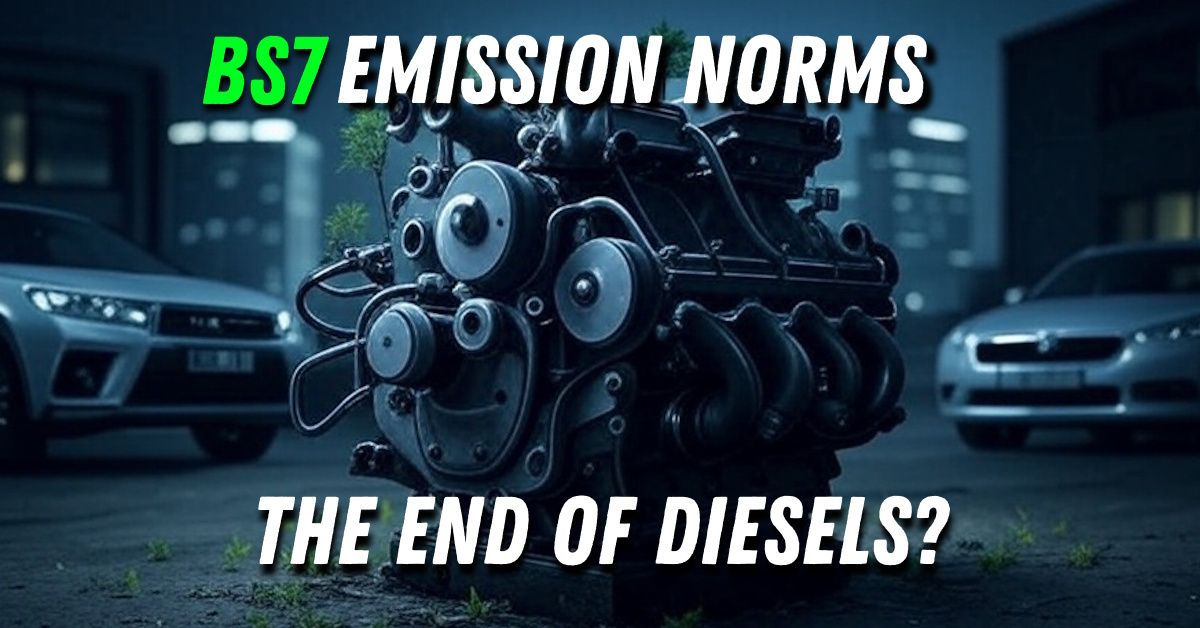Will BS7 Emission Norms Kill Diesels Completely?


The idea that Bharat Stage 7 (BS7) norms will wipe diesel vehicles off Indian roads paints an overly dramatic picture. While these stricter emission rules do pose serious challenges to conventional diesel engines, it’s far from a death sentence. Instead, what lies ahead may be a reinvention of diesel’s role—less widespread, more specialised, and potentially cleaner than before.
BS7, expected to roll out by 2026 or 2027, mandates a significant cut in nitrogen oxide emissions for diesel engines, bringing them on par with petrol at 60 mg/km. Add to that the requirement for real-time onboard monitoring, and the technical bar is set high. To comply, carmakers will need to install costly systems such as selective catalytic reduction (SCR), diesel particulate filters (DPFs), and AdBlue dosing units. For many models, this could mean an increase of ₹1.8 to ₹2.5 lakh in retail prices.
This spells trouble for compact SUVs and sedans where cost is a deciding factor. However, writing diesel off altogether overlooks some critical realities.
First, BS7 focuses on passenger vehicles, not commercial ones. Trucks, buses, tractors, and construction machinery, where diesel remains dominant, are largely exempt. This leaves a significant chunk of the market untouched.
Second, manufacturers such as Mahindra and Tata, which export diesel-powered SUVs to regions like Africa and South America, are unlikely to shut production lines entirely. Some diesel variants may continue, primarily to serve overseas markets.
Third, there are functional advantages that petrol or EVs still struggle to match. Diesel engines provide better torque, making them the go-to choice for off-roading, towing, and long-distance travel. This keeps demand alive in niche segments like large SUVs and fleet operations where low mileage Petrols have a distinct disadvantage.
All is not lost for diesel, thanks to innovation.
Some global automakers are exploring hybrid diesel powertrains and synthetic fuels. Blending 20 percent biodiesel into regular diesel can reduce particulate emissions and extend diesel’s life within regulatory limits. Synthetic fuels, derived from captured carbon dioxide and renewable energy, are also being trialled to keep internal combustion engines relevant.
India’s current push for ethanol blending (with a 20 percent target by 2025) could indirectly support bio-diesel programmes as well.
Meanwhile, the BS7 framework may not be as rigid as feared. Europe has already softened its Euro 7 regulations after lobbying from carmakers. India, too, has a history of phasing in norms gradually, with relaxed timelines or reduced enforcement in rural markets. This may allow diesel to linger longer in smaller towns and less regulated zones.
Then there’s the question of economics. For buyers who prioritise fuel efficiency and resale value, like taxi operators, big SUV buyers, or rural consumers, paying more upfront for a BS7-compliant diesel might still make sense. Maruti’s exit from diesel reflects an urban-focussed strategy, not a blanket rejection.
The government’s push toward electric mobility does align with the tightening of diesel norms, but the transition is anything but smooth.
India has fewer than 12,000 public EV chargers, and most cities lack adequate infrastructure. Add to that the steep upfront costs of EVs, still 25 to 40 percent higher than diesel counterparts, and the appeal of diesel becomes clearer.
Power reliability also plays a role. In several parts of the country, especially in the north and east, power cuts are frequent. Diesel generators still run hospitals, telecom towers, and small businesses. This dependency won’t vanish overnight.
Despite strong anti-diesel statements from policymakers, actual legislation has been more cautious.
There is no formal diesel ban set in stone for 2027. Proposals exist, but several states have pushed back, citing risks to employment and logistics. Diesel still enjoys lower taxes in agriculture and freight transport, with subsidies in place for farmers. Toll discounts for diesel trucks further skew the economics.
Moreover, India’s ₹25,000 crore diesel generator industry remains out of BS7’s scope. As long as these sectors are untouched, diesel production will continue in some form.
BS7 will likely accelerate diesel’s decline, particularly in metros. By 2030, diesel’s share in the passenger vehicle market could drop to below 5 percent from the current 17 percent. But that’s not the same as extinction.
Diesel will continue to survive in pockets: rural India, commercial transport, heavy-duty applications, and export markets. Hybridisation, biofuels, and synthetic fuels could keep it on life support in premium or performance-focused segments.
More than a death sentence, BS7 could trigger a transformation. Mahindra is working on hydrogen-combustion engines. Ashok Leyland is testing dimethyl ether (DME) as an alternative. These technologies may emerge not to replace diesel entirely, but to evolve it.
In that sense, BS7 is less about killing diesel and more about forcing it to adapt. The story of diesel in India isn’t ending. It’s simply being rewritten.